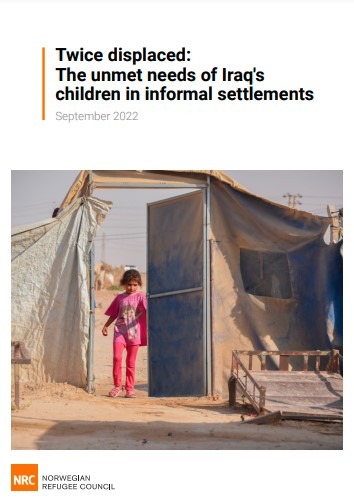While largescale military operations to combat the Islamic State
(IS) group ceased in 2017, 1.18 million people remain internally
displaced in Iraq in 2022. The estimated 200,000 displaced
households continue to face significant barriers to returning to
their areas of origin and achieving durable solutions, especially
in the midst of internally displaced person (IDP) camp closures
over the last several years. Tens of thousands of IDP families have
consequently been secondarily displaced, meaning that they have
been voluntarily or forcibly displaced from their current location
of displacement to another location.
As a result, an estimated 103,000 secondarily displaced individuals
dwell in informal settlements, or sites that host five or more
displaced households living in sub-standard conditions that were
not constructed to accommodate people. Families living in such
sites constitute one of the most complex caseloads currently left
in Iraq. Needs remain significant due to inadequate shelter and an
absence of public services, which presents particular challenges
for the education and welfare of secondarily displaced children,
particularly girls.
In early 2022, 615 household surveys and 38 key informant
interviews (KIIs) were undertaken to understand the unmet needs
of secondarily displaced children in informal settlements in Iraq.
Children and their caregivers, teachers, community members, and
government officials were surveyed and interviewed throughout
Anbar, Kirkuk, Ninewa, and Salah ad-Din governorates to assess key
vulnerabilities related to the education, protection, and wellbeing
of secondarily displaced children.
Children and Youth, Displacement
Report
English

